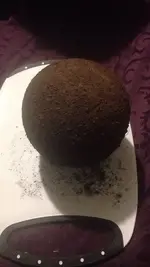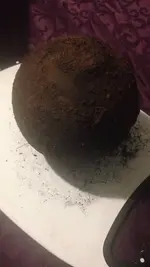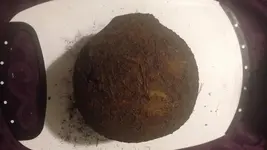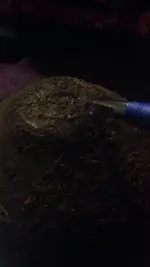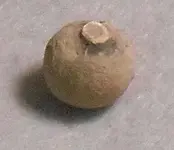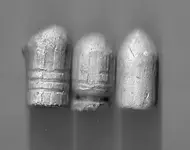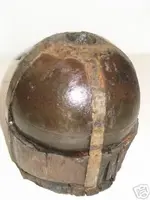Before the early-1800s, cannonballs were indeed "patched" with a fabric wrapping to fill in the greater Windage in cannons-&-projectiles of the Colonial Era. After the early-1800s, cannonballs were fitted with a wooden cup ("sabot") held in place by crossed tin straps. The purpose was an attempt to keep the ball's fuze facing away from the propellant powder charge. If the fuzeplug was exposed to firing blast, it could be driven into the shell by the firing blast, causing the shell to explode inside the cannon's barrel. But we know from Ordnance Department reports that the sabot wasn't always successful at its intended function. The ball tended to "roll" on its way out of the barrel, exposing the fuzeplug to firing-blast. The "rolling" problem is why cannonball fuzeplugs were carefully made to fit flush (or very nearly flush) with the ball's surface.
And of course, the "rolling" problem is why the ball posted by Iron Patch definitely is not a cannonball.
The photo below shows a civil war 12-pounder caliber roundshell, found underwater by a scuba-diver, with its original wooden cup sabot and crossed tin straps and collar which encircled the shell's fuzeplug. The waterlogged wood sabot shrank somewhat when it dried out after more than a century underwater.



